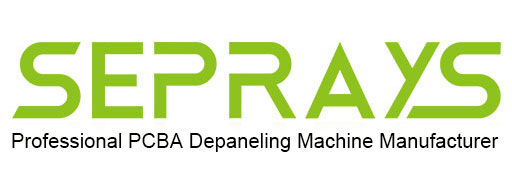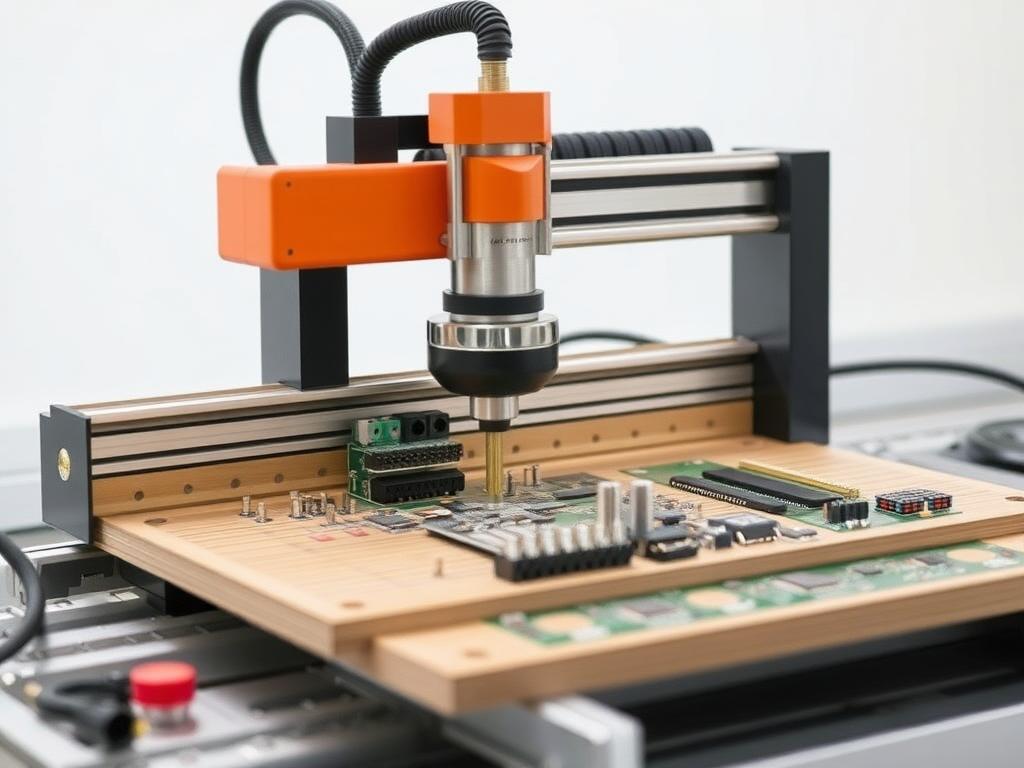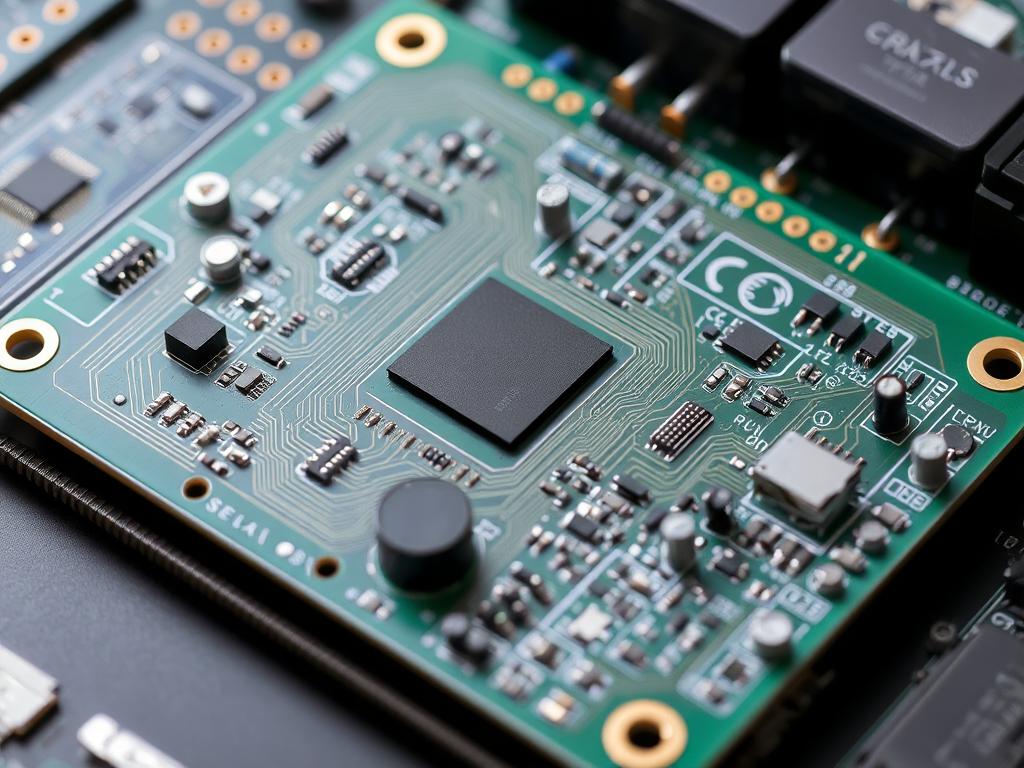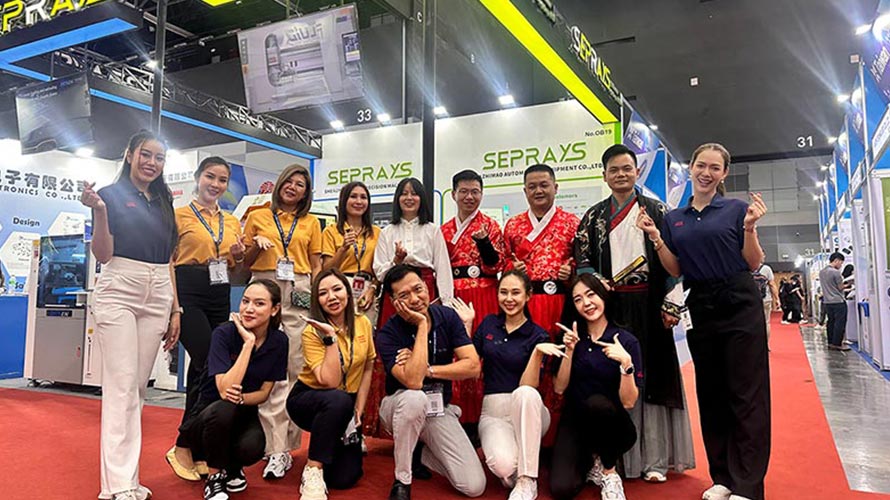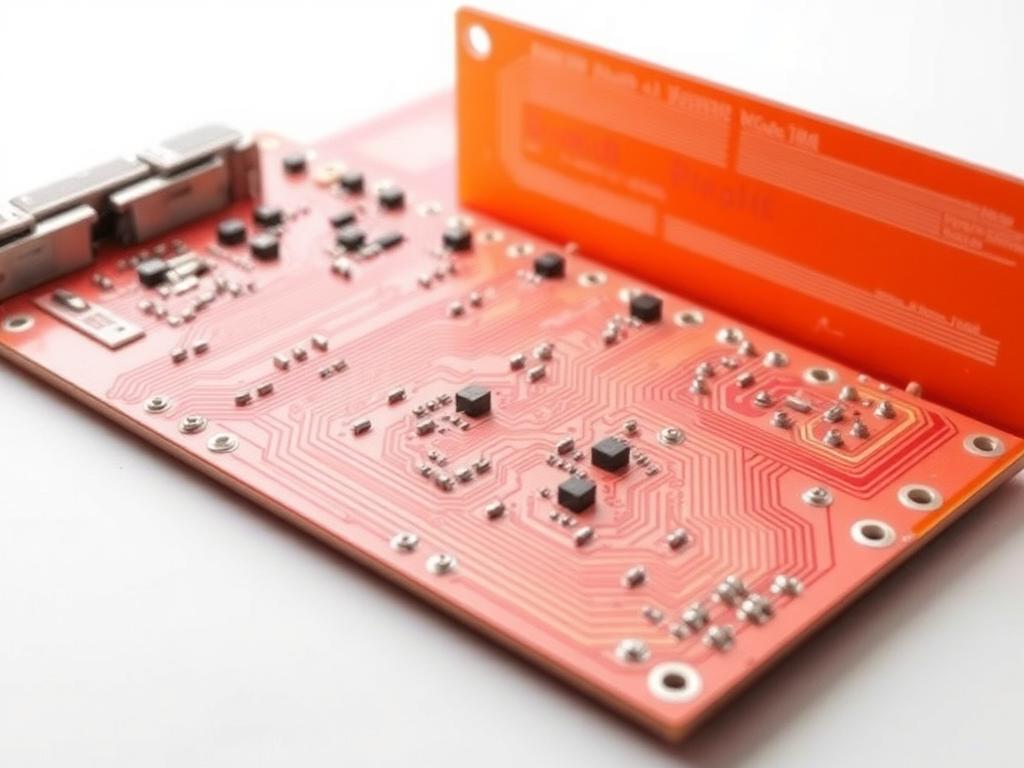![]()
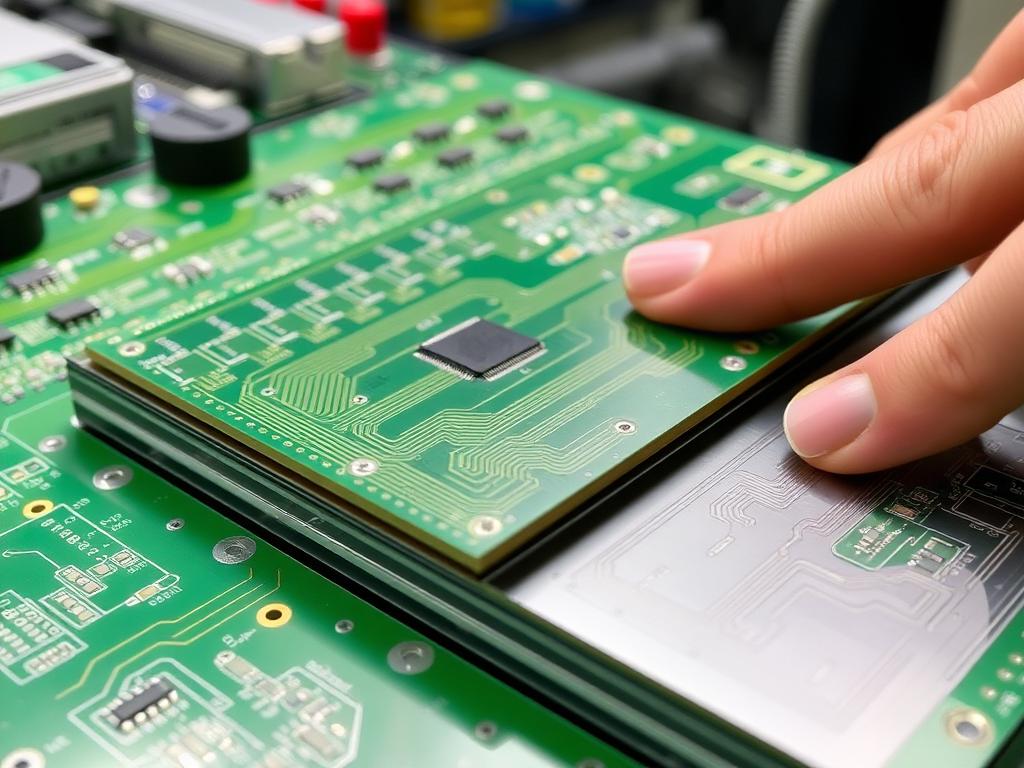
Multi-layer PCB depaneling
Precision PCB Depaneling: Mastering Multilayer PCB Separation for Flawless Circuit Boards
As someone who’s spent the last 20 years deeply immersed in the world of PCB manufacturing, I’ve seen firsthand how critical the depaneling process is. It’s the final step in transforming a large, multi-unit panel into individual, functional circuit boards. In this article, I’ll be sharing my expertise on the different methods of PCB depanelleme, with a special focus on the complexities of multilayer pcbs. We will explore various techniques, tools, and best practices to ensure you’re getting the best results for your valuable circuits. Whether you’re a seasoned professional or new to the industry, this guide is packed with insights that can help you optimize your pcb manufacturing process.
PCB Depaneling Nedir ve Neden Önemlidir?
PCB depanelleme bireysel bireylerin ayrılması sürecidir PCB'ler daha büyük bir panelden sonra PCB imalatı is complete. Think of it like breaking apart a chocolate bar into individual squares; you start with one big piece and then divide it into smaller pieces, ready to use. This step is crucial because during the pcb fabrication process, it’s much more efficient to produce many circuits on a single plaka. Once the elektronik bileşenler are placed and lehim is applied, the daha büyük panel needs to be broken down into those bireysel PCB'ler. The precision of this process directly impacts the quality and reliability of the final product. Poor depaneling can lead to mekanik stres, damaging sensitive devre and rendering your precious boards useless. For example, excessive force in a manual separation process may lead to small cracks and shorts. We have seen this happen in some of the smaller companies, especially.
We are very meticulous about this stage in the process. As a leader in PCB depanelleme solutions, we’ve provided our machines to industry giants like TP-LINK, Canon, BYD, Flex, TCL, Xiaomi, Lenovo, OPPO, HONOR, and Foxconn. These companies rely on precision and efficiency, and we deliver that. We have helped many to achieve consistent separation. These giants require an automated, high-precision solution, which is what our machines are designed to do. We have found that with automation, mekanik stres is greatly reduced.
What are the common depaneling methods used in the industry?
Over my 20 years in this business, I’ve witnessed several methods for PCB depanelleme. Each comes with its own set of advantages and disadvantages, depending on the type of pcb being produced. Here are a few common approaches:
- Manual Depaneling: This is the most basic method, using hand tools like a pizza kesici or pliers. It’s suitable for low-volume production or prototyping, but its accuracy is limited, and it often leads to mekanik stres on the board. This method is fine for prototyping and can be considered a good option for very small volumes of production.
- Scoring or V-Groove Depaneling: This involves creating a V-shaped groove along the separation lines of the baskılı devre kartı, allowing the boards to be snapped apart with controlled force. This method is cost-effective and efficient but may not be suitable for all board designs, especially those with components near the edges.
- Yönlendirme: This involves using a yönlendirici to precisely cut along the outline of the PCB'ler. Yönlendirme offers high accuracy, making it suitable for complex shapes and sensitive components. It also leads to a smooth edge quality. We offer a range of yönlendirici machines for different needs.
- Yumruklama: This method uses a die and press to separate the PCB'ler. This is a fast option for high-volume production, but it requires custom tooling and is best suited for specific board shapes. It is very precise if you have the correct equipment.
- Lazer Depaneling: This is the most advanced method, using a focused lazer ışını kesmek için baskılı devre kartı. Lazer depaneling is highly accurate, minimizes stress, and offers greater design flexibility. We have invested heavily in advanced lazer technology to deliver the best results.
Why is laser depaneling gaining popularity?
Lazer depaneling has rapidly gained traction in recent years, and for good reason. The ability to use a very thin and precise lazer ışını to separate the PCB'ler is revolutionizing the depaneling işlemi. One of the key advantages is its minimal mekanik stres. Unlike other methods that can exert significant pressure on the boards, lazer depaneling ensures that the delicate elektronik bileşenler are not damaged. This is especially vital for multilayer pcbs, where the internal devre is more susceptible to damage.
Lazer kesim is also highly adaptable. It can easily handle complex shapes and contours that would be difficult or impossible to achieve with other methods. This flexibility is a boon for designers pushing the boundaries of PCB tasarımı için elektronik cihazlar Ve smartphones. Furthermore, lazer depaneling eliminates the need for tooling, making it ideal for small to medium-sized production runs. This offers pcb manufacturers the flexibility that is needed in today’s market. At PCB Depaneling, we have seen firsthand the benefits our customers get from using our lazer depaneling equipment. We believe this is the future of depaneling, and are happy to help customers move into this high-precision method.
How does multilayer PCB depaneling differ from single-layer boards?
Multilayer pcbs are a marvel of modern engineering. They consist of multiple layers of iletken katmanlar, separated by insulating laminat. These layers allow for more complex devre in a smaller form factor. While single-layer boards have connections placed on the top, multilayer printed circuit boards have several copper foil layers ile electrical connections formed throughout the board. This complexity also brings challenges, especially when it comes to panelden ayırma. The increased number of inner layers makes these boards more fragile, increasing the risk of damage during separation. This risk is multiplied when using older methods. This fragility makes the ayırma süreci a complex procedure.
Standard mechanical depaneling yöntemleri can introduce too much mekanik stres, potentially causing delamination, where the layers begin to separate. Therefore, precise methods are essential to maintain the structural integrity and reliability of multilayer boards. Lazer depaneling is often the method of choice for multilayer pcbs due to its non-contact nature, which minimizes mekanik stres and reduces the possibility of damage. We have found that the additional cost is justified, as it reduces the number of scrap boards and improves overall reliability of the product.
What are the challenges associated with multilayer pcb manufacturing?
Multilayer pcb manufacturing is a delicate art form. The process involves bonding multiple layers ile ilgili iletken Ve insulate materials together, creating a complex stack-up of circuits. The most significant challenge in manufacturing these complex boards is maintaining precise alignment of the layers. Any misalignment can affect the function of the board and lead to defects. The laminasyon process, during which the layers are bonded together, requires meticulous control of temperature, pressure, and vacuum. Any deviations in these parameters can result in imperfections such as voids and delamination. We have helped to optimize these processes for many of our customers.
Another major challenge is ensuring good signal integrity. In multilayer pcbs, signals can interfere with each other, especially at high frequencies. Careful PCB tasarımı and precise fabrication techniques are essential to minimize EMI and signal loss. Moreover, the higher the number of layers, the more complex the manufacturing becomes, leading to longer production times and higher costs. That is why choosing the right depaneling sistemi is very important, as it is critical to the overall success of the manufacturing process. We have spent many years designing solutions to help customers overcome these problems.
What are the different types of PCB depaneling machines available?
Over the years, the advancement of technology has led to the introduction of several types of PCB depanelleme machines to meet varied demands and production scales. Here’s a brief look at some of the machines we offer:
- Automatic Router Machines: These machines utilize a high-speed spindle to separate the PCB'ler ile yönlendirme along a pre-determined path. They are precise, versatile, and suitable for complex board shapes. Our GAM 330AT Hat İçi Otomatik PCB Yönlendirici Makinesi is an excellent example. GAM 330AT Hat İçi Otomatik PCB Yönlendirici Makinesi
- Automatic V-Groove Separator: These machines utilize a blade to separate PCB'ler along a v-oluk. They are ideal for high-volume production where the v-oluk method is suitable. Our ZM30-ASV Tam Otomatik testere tipi V-oluklu PCB panel çıkarma is the right choice for many clients. ZM30-ASV Tam Otomatik testere tipi V-oluklu PCB panel çıkarma
- Automatic Laser Depaneling Machines: These machines use a focused lazer ışını to cut through the material, offering high precision and minimal stress. The DirectLaser H5 is our recommended choice for lazer depaneling. DirectLaser H5 PCB-FPC Lazer Kesim Makinesi
- Automatic Punching Machines: These machines use a punch to cut through the material, and are typically faster than milling. We offer the ZM10T & 15T PCB & FPC Delme Kesme Makinesi for our customers. ZM10T & 15T PCB & FPC Delme Kesme Makinesi
The right machine will depend on your production volume, board complexity, budget, and required precision. We’ve found that many smaller manufacturers grow with our yönlendirici and then move into our lazer depaneling offerings. We are always available to help our customers find the best solution for their needs.
What is the role of V-groove depaneling?
V-oluk depaneling is a common method used in the pcb manufacturing process, particularly for boards that are designed with a predefined snap-off line. During the fabrication stage, a V-shaped cut is made into the laminat material along the edges of the PCB'ler that need to be separated. The v-oluk acts as a guide, allowing the boards to be easily separated through controlled breaking. The biggest advantage of v-oluk depaneling is its speed and efficiency. It’s a cost-effective kesme yöntemi, which is why it’s widely used for high-volume production of rigid pcbs, such as standard electrical boards. For example, it works well when producing PCB'ler için consumer electronics.
However, this pratikte yöntem has limitations. The quality of the break can vary and may result in some mekanik stres on the board, especially if not performed correctly. It’s not suitable for complex shapes and boards with components that are placed close to the separation line. While v-oluk depaneling is not as versatile as lazer kesim, it remains a practical solution for many applications where these constraints aren’t an issue. We offer several V-oluk depaneling machines, including the ZM30-P PCB Giyotin Ayırıcı for high volume applications. ZM30-P PCB Giyotin Ayırıcı
How do PCB/FPC punching machines contribute to the separation process?
PCB/FPC delme makineleri are another efficient solution for PCB depanelleme, particularly for high-volume manufacturing. These machines employ a custom-made die and press to cut out the PCB'ler from the panel. This kesme işlemi is typically faster than yönlendirme and can be used with a wide variety of board shapes and sizes. The main benefit of using PCB/FPC delme makineleri lies in their speed and accuracy. Once the tooling is set up, the ayırma süreci is quick and consistent, allowing for large quantities of PCB'ler to be processed quickly. They’re often used in the üretim süreci of smartphones and wearables due to their high throughput capacity.
However, setting up the tooling for each different board design can be time-consuming and expensive. Therefore, these machines are best suited for situations where the volume of PCB'ler is high enough to justify the initial cost. Another limitation is the type of materials that can be processed. Thicker PCB'ler may require more powerful machines and special tooling. Despite these limitations, our customers see tremendous benefits in the right environment. The ZM10T & 15T PCB & FPC Delme Kesme Makinesi is a versatile option. ZM10T & 15T PCB & FPC Delme Kesme Makinesi
Why is precision so important when depaneling circuits?
Precision in panelden ayırma is paramount, especially with the increased use of multilayer pcbs and miniaturized elektronik bileşenler. Inaccurate panelden ayırma can cause various issues that can compromise the reliability and performance of the final product. Damage to delicate surface-mount elektronik bileşenler Ve through-holes are some of the common issues related to the kesme işlemi. Yanlış kesme yöntemi can cause stress fractures in the laminat material, leading to premature failure. This is especially important in critical applications such as tıbbi cihazlar Ve aerospace teçhizat.
Another often overlooked issue is the risk of delamination in multilayer pcbs. Incorrect separation can cause the layers to separate, causing damage to the devre within. When it comes to multilayer printed circuit boards, maintaining precision is vital, as these boards have layers and more complexity compared to double-layer pcbs. Precise separation eliminates the need for subsequent cleaning, thus reducing manufacturing costs and ensuring high-quality individual printed circuit boards. This is why we put so much focus on high precision technology. When you purchase our PCB depanelleme machinery, we provide the best result.
How do I choose the right depaneling method for my pcbs?
Doğruyu seçmek depaneling yöntemi depends on many factors, including the type of pcb, production volume, budget, and the complexity of the design. Here’s a simple guide to help you make an informed decision:
- For prototyping and low-volume production: Manual methods like scoring or hand tools may suffice if you don’t need a large number of pcbs. However, keep in mind that this can be inefficient.
- For medium-volume production of simple boards: V-oluk depaneling may be suitable if the design allows.
- For complex shapes and designs: Yönlendirme offers versatility and precision.
- For high-volume production with regular shapes: Delme is a fast and efficient option, provided that the number of pcbs is large enough.
- For high-precision and sensitive applications (especially multilayer pcbs): Lazer depaneling is the ideal choice due to minimal mekanik stres and high adaptability.
We at PCB Depaneling, with our 20 years of experience, understand that there is no one-size-fits-all solution, and will help to analyze your specific needs to recommend the best solution. Bize Ulaşın today to discuss your needs, and let us be your guide.
FAQs:
What is the difference between routing and laser depaneling? Routing uses a rotating tool to cut the PCB, sırasında lazer depaneling odaklanmış bir şekilde kullanır lazer ışını. lazer method is more precise, and reduces mekanik stres. We have seen that it is preferred in advanced manufacturing.
Can laser depaneling be used for all types of PCBs? Lazer depaneling can be used on a wide range of materials, but it is particularly advantageous for multilayer pcbs and those with intricate designs, because of reduced stress and high precision.
How can I reduce mechanical stress during depaneling? The best way to minimize mekanik stres is to use precise depaneling yöntemleri such as lazer kesim or high-quality yönlendirme machines. Proper maintenance of the depaneling sistemi can also play a part.
What are the key considerations for multilayer PCB depaneling? When dealing with multilayer pcbs, it is important to choose a method that minimizes stress on the board. Lazer depaneling is often favored due to its non-contact approach, which reduces the risk of delamination and damage.
What level of production volume is appropriate for a punching machine? Punching is ideal for high-volume productions because the setup cost and time are higher than lazer Ve yönlendirici machines. It’s crucial that you have enough throughput to justify the initial investment.
- Özet:
- PCB depanelleme hayati bir parçasıdır pcb manufacturing process, separating bireysel PCB'ler birinden panel consisting ile ilgili multiple layers.
- There are different depaneling yöntemleri, including manual, v-oluk, yönlendirme, yumruklama, Ve lazer depaneling.
- Lazer depaneling is gaining popularity due to its precision, minimal mekanik stres, and versatility with different types of pcbs.
- Multilayer pcbs require extra caution during panelden ayırma due to their complex structure and sensitivity to damage, and require a high level of precision and advanced techniques.
- Doğruyu seçmek depaneling yöntemi depends on several factors, such as complexity of the design, and production volume.
- Our 20 years of expertise have made us a leader in PCB depanelleme, trusted by leading companies such as TP-LINK, Canon, BYD, Flex, TCL, Xiaomi, Lenovo, OPPO, HONOR, and Foxconn.
- Bize Ulaşın today to discuss your PCB depanelleme needs and let us provide you with an optimized solution.
